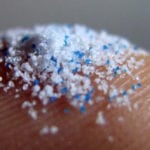 Technology
Technology  Technology
Technology  Humans
Humans 10 Everyday Human Behaviors That Are Actually Survival Instincts
 Animals
Animals 10 Animals That Humiliated and Harmed Historical Leaders
 History
History 10 Most Influential Protests in Modern History
 Creepy
Creepy 10 More Representations of Death from Myth, Legend, and Folktale
 Technology
Technology 10 Scientific Breakthroughs of 2025 That’ll Change Everything
 Our World
Our World 10 Ways Icelandic Culture Makes Other Countries Look Boring
 Misconceptions
Misconceptions 10 Common Misconceptions About the Victorian Era
 Mysteries
Mysteries 10 Strange Unexplained Mysteries of 2025
 Miscellaneous
Miscellaneous 10 of History’s Most Bell-Ringing Finishing Moves
 Technology
Technology Top 10 Everyday Tech Buzzwords That Hide a Darker Past
 Humans
Humans 10 Everyday Human Behaviors That Are Actually Survival Instincts
 Animals
Animals 10 Animals That Humiliated and Harmed Historical Leaders
Who's Behind Listverse?

Jamie Frater
Head Editor
Jamie founded Listverse due to an insatiable desire to share fascinating, obscure, and bizarre facts. He has been a guest speaker on numerous national radio and television stations and is a five time published author.
More About Us History
History 10 Most Influential Protests in Modern History
 Creepy
Creepy 10 More Representations of Death from Myth, Legend, and Folktale
 Technology
Technology 10 Scientific Breakthroughs of 2025 That’ll Change Everything
 Our World
Our World 10 Ways Icelandic Culture Makes Other Countries Look Boring
 Misconceptions
Misconceptions 10 Common Misconceptions About the Victorian Era
 Mysteries
Mysteries 10 Strange Unexplained Mysteries of 2025
 Miscellaneous
Miscellaneous 10 of History’s Most Bell-Ringing Finishing Moves
10 Strange And Notable Antarctic Fatalities
In Antarctica, you can experience maddening silence, the thunder of calving icebergs and cracking glaciers, deafening gales, weeks of darkness, rare sunny days, and deceptive calm. One of the harshest environments on Earth, Antarctica is both beautiful and completely unforgiving toward those who venture into its vast emptiness. Indifferent to human suffering and despair, the world’s southernmost continent readily collects the ghosts of explorers. Here are 10 perplexing fatalities from a continent of surprise death and insane extremes.
10 Edgar Evans
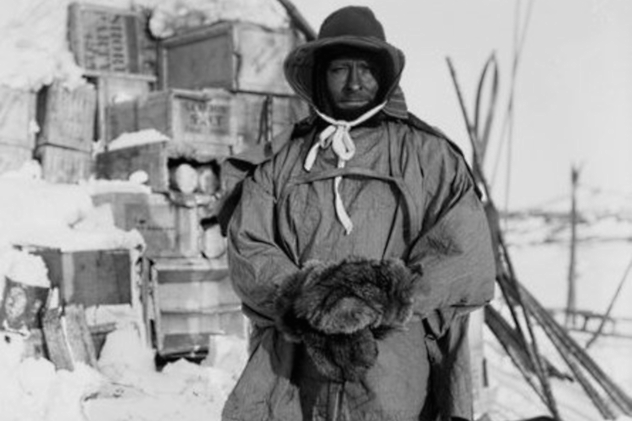
In 2002, scientists from the University of Waikato were surprised to confirm the presence of anthrax in samples taken from the stables at Robert Falcon Scott’s base camp at Cape Evans. The stables were built in 1911, prior to Scott’s doomed expedition to the South Pole. They housed the Manchurian ponies and Himalayan mules that the expedition brought to assist them in their exploration. Anthrax was endemic in Asia at that time, so these equines are assumed to have carried the deadly bacteria to Antarctica.
This new evidence has renewed speculation that Edgar Evans, a member of Scott’s expedition, may actually have died from anthrax poisoning, a conclusion originally reached in 1986 by Canadian doctor R.C.F. Falckh. The strongest and most cheerful man in the party, Evans’s mental and physical health began a mysterious decline, presumably after slipping and hitting his head on the slopes of the Beardmore Glacier. As his strength ebbed, and he began to delay the others, the expedition’s doctor, Edward Wilson, believed that Evans “must have injured his brain by a fall,” but this statement implies that the fall was never actually witnessed.
Nonetheless, Evans was believed to have died from this supposed head injury, with scurvy, dehydration, and high altitude quickening his death. However, the symptoms exhibited by Evans—accelerating tiredness and mental confusion—are consistent with anthrax exposure. Scott also noted that Evans’s mood and behavior had already begun to change before they started to descend the Beardmore Glacier. Additionally, Evans had cut his hand in another clumsy, uncharacteristic accident.
In mid-February, Scott wrote: “After lunch and Evans still not appearing, we looked out to see him still afar off . . . I was first to reach the poor man and was shocked by his appearance; he was on his knees with clothes disarrayed, hands uncovered and frostbitten, and a wild look in his eyes.” Evans died hours later. To date, the site of his grave has never been found. An autopsy of Evans’s body, should it ever be found, could still confirm whether or not he was a victim of anthrax, even after a century. It would be dehydrated but otherwise well-preserved.
9 Xavier Mertz
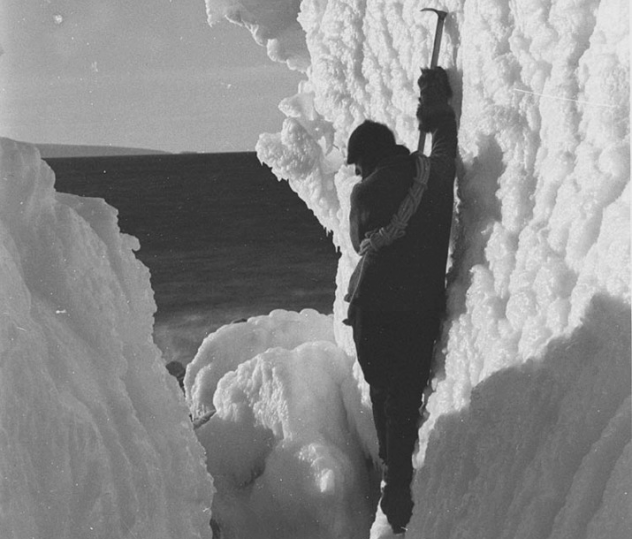
You may know the dramatic account of Douglas Mawson’s miraculous survival against all odds when his attempt to reach the South Pole ended in disaster. Mawson, sole survivor of that ill-fated 1912 expedition, was lauded as a hero for over 100 years, until historian David Day caused a media storm in Australia by suggesting that Mawson’s incredible tale of loyalty to his dying friend, Xavier Mertz, might not add up after all.
Mawson and Mertz lost half their supplies when expedition member Belgrave Ninnis plunged into a crevasse with his sleigh. Mawson’s journal suggests that he thought they might be able to make it back to base on starvation rations, but Mertz grew delirious and died on January 7. Day’s hypothesis is that Mawson decided to cut the rations, believing that the less experienced Mertz would die first, allowing the more hardened Mawson to take the rest of the food for himself. Critics have pointed out that this is an unprovable and rather convoluted plot. It would also have been extremely risky, since Mawson himself suffered terribly from starvation and exhaustion. At one point, the soles of his feet detached entirely, forcing him to tape them back on over the bubbling mass of pus underneath.
More interesting is the subject of what happened after Mertz died. Ninnis died on December 14, leaving the pair with supplies for a week and a half. They supplemented these by gradually killing and eating the six surviving sled dogs. They killed the last dog on December 28, spending several hours boiling the meat. Mawson, however, didn’t stumble upon a supply cache until January 29. How did he survive that long? And why did he describe cooking dog meat on January 10, when the last dog had been slaughtered and cooked weeks before?
Day argues that Mawson must have consumed some of Mertz’s flesh, allowing him to stay barely alive until he reached the supply cache. Other historians have disputed this scenario, noting a number of problems with Day’s work and citing Mawson’s own diary, where the explorer noted that he “could pull through by [him]self with the provisions at hand” if Mertz died. Until Mertz’s body, buried somewhere in the Antarctic, is found, the question will likely remain the subject of intense debate.
8 Stephen Thomas
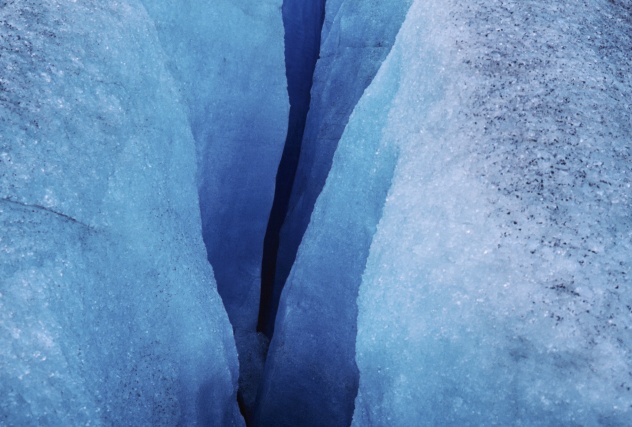
Stephen Thomas was a British multimillionaire noted for his “considerable achievements.” He made his money in the IT industry. Aside from dominating in the arena of commercial enterprise, Thomas also enjoyed completing grueling physical challenges. He climbed several dangerous mountains and circumnavigated the globe in a yacht. Having survived all of that, Thomas set his sights on reaching a new goal, one of the few goals left that could satisfy his need to continually up the ante. This time, he would sail from the Arctic Circle to the Antarctic Circle, the two limits beyond which navigating a yacht becomes extremely dicey due to huge ice masses and freezing waters.
Thomas succeeded yet again in spite of the many things that could have gone horribly wrong. However, his luck soon failed him in a spectacularly cruel and ironic way. After two years of sailing, he celebrated his success and went ashore in Antarctica. He was walking near the British base of Port Lockroy with members of his crew, taking photographs of the scenery, when the ice gave way beneath him and he fell into a crevasse. He died of his injuries soon after.
7 Rodney Marks

The poisoning of astrophysicist Rodney Marks at the South Pole has been referred to as “one of the strangest, and most baffling, deaths in the southern hemisphere.”
Marks was spending the winter at the Amundsen-Scott base in 2000. He fell seriously ill and eventually died. His body was put in storage. It wasn’t until months later that the coroner figured out the cause of death: Marks had died of methanol poisoning. Suicide was ruled out, as was the idea that Marks would have knowingly ingested the poison in a misguided attempt to get high, since alcohol and even cannabis were freely available to him at the base.
Methanol was being used as a cleaning agent on the base, but no one could figure out how toxic levels of it had ended up in Marks’s body. Syringe marks were found in his arms, leading to speculation that Marks had been murdered. This was fueled by an apparent cover-up on the part of Marks’s colleagues, who quickly dispersed when spring arrived, before a proper inquiry could be carried out. Later inquiries made by New Zealand police (who had jurisdiction) were met with “a wall of silence.”
Though described as highly intelligent, Marks was also said to have been a binge-drinking victim of Tourette’s syndrome. He was perhaps a prime candidate for angering someone during the long, psychologically draining winter months. Living holed up in an Antarctic base in close proximity with the same people day after day has been known to get the better of people. For example, two men, one with a possibly broken jaw, had to be evacuated in 2007 after a drunken Christmas brawl.
We’re unlikely to ever know what really happened in Marks’s case, since his room was cleaned, potential evidence was thrown away as rubbish, and the findings of the US agencies involved were never released.
6 Barbara Johns
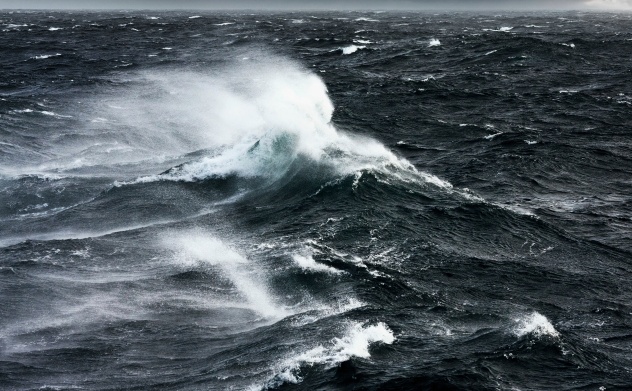
Edward Nelson was a biologist who accompanied Robert Falcon Scott and his men to Antarctica as part of the Terra Nova Expedition from 1910–12. Nelson did not go along on Scott’s ill-fated attempt to reach the South Pole, instead staying in his laboratory at Cape Evans and surviving.
Roughly a century later, Nelson’s daughter, Barbara Johns, was inspired to revisit Cape Evans and other sites in Antarctica that were important to the Terra Nova mission. Johns spent years planning her pilgrimage and finally left her home in Spain in early 2009. She joined a ship which carried over 40 passengers. South of Macquarie Island, the ship encountered rough seas, and Johns fell in her cabin. She died of head injuries soon after, at age 93. That same evening, passengers sighted their first iceberg.
5 The First South Pole Skydive
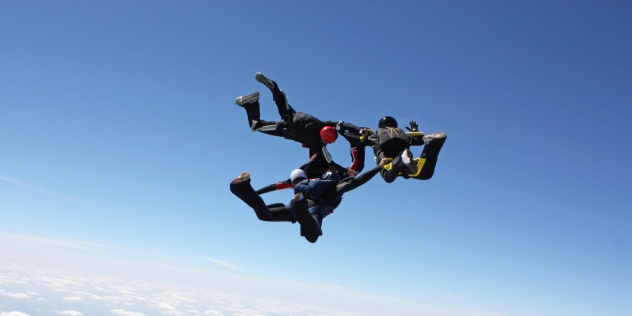
Antarctica has a growing tourism trade and leisure industry, and some worry about what impact this might have on the continent’s pristine environment. A more immediate concern might be the safety of those who travel there. Billing their stunt as the first private skydive directly over the South Pole, the Adventure Network International company was probably more preoccupied with the impact that their event would have on future sales. Nobody expected the jump to end with an impact strong enough to shatter every bone in the human body. Six men made the jump, and three of the men’s parachutes either failed to open or failed to open properly.
The skydivers involved were all highly trained and experienced. Safety measures seemed to be in place, so what went wrong? One theory is that the men succumbed to hypoxia, or a lack of oxygen. Hypoxia can result in confusion and dizziness and may well have been induced by the thin air at the jumpers’ high altitude. Although skydiving from 2,600 meters (8,500 ft) is nothing new, Antarctica is the highest continent on Earth, and the South Pole is already roughly 2,800 meters (9,300 ft) above sea level.
4 Casey Jones

Serious work-related accidents are not uncommon in the Antarctic, and New Zealand’s government recently commemorated several on-the-job Antarctic fatalities. Deaths by crushing include Andrew Burl Moulder, who was caught between a 20-ton cargo sled and an aircraft loading ramp in 1966. More recently in 2010, a Chinese worker sustained serious abdominal injuries when he was crushed by an out-of-control vehicle.
Some people are unlucky, but Casey Jones, a cook assigned to the Amundsen-Scott South Pole Station, was exceptionally unfortunate in January 1980. Jones was apparently attempting to clear a vertical intake shaft in a fan room. The vent shaft was packed with a column of snow which gave way, falling on top of him like a hammer. Jones was crushed and buried under the weight of it, dying in an otherwise safe, indoor location. Cremated in New Zealand in accordance with his family’s wishes, Jones’s ashes were later scattered from an aircraft flying over the Beardmore Glacier.
3 Carl R. Disch
Carl Robert Disch was a scientist working for the National Bureau of Standards, and he was staying for the winter in 1965 at Byrd Station. He regularly traveled between the main station complex and the radio noise building, following a hand line so as not to get lost. He had traversed this route over 25 times without incident, but on the morning of May 8, for some reason, he did not make contact with the hand line, perhaps due to the seasonal darkness and heavy, blowing snow.
When Disch failed to arrive back at Byrd Station, an initial search of the immediate area was made, and a trail was found, heading west. Further searches that day were hampered by the darkness and bad weather, but a vehicle search set out the following evening. This search found intermittent tracks heading south of the station for a distance of about 6 kilometers (4 mi), leading to a point where they simply disappeared.
According to official reports on the South Pole Station’s website, “There was no noticeable shortening of stride in these tracks.” Disch, who had been dressed for the weather, seemed to be striding purposefully toward something. Perhaps it was the direction in which he imagined the station to be, perhaps he was determined to end his life, or perhaps he was following some sensory illusion or hallucination—not unheard of in the Antarctic. Searches continued for days, but Disch was never seen again.
2 Mrs. Chippy

Mrs. Chippy has the dubious distinction of presumably being the first cat in history to travel to—and end up shot to death in—the Antarctic. The cat (who was actually a male) belonged to Henry “Chippy” McNish, the carpenter aboard Earnest Shackleton’s ship, the Endurance. McNish was an outspoken, opinionated Scotsman. He questioned some of Shackleton’s decisions during the 1914 expedition to the Antarctic. Shackleton seems to have strongly resented McNish for challenging his authority.
When the ship became immobilized by pack ice, Shackleton shot McNish’s beloved cat, along with the other animals aboard. Some believe this to have been an unnecessary action, motivated purely by spite. It quite possibly was, since Shackleton also refused to recommend McNish for the Polar Medal unlike the rest of his shipmates, even though, by Shackleton’s own admission, the entire crew would surely have perished without the carpenter’s foresight and expertise.
It was McNish who modified the lifeboat that was later used to travel roughly 1,300 kilometers (800 mi) to South Georgia Island to obtain help. Without McNish’s modifications, the lifeboat would almost certainly never have completed such a journey. Nonetheless, the dishonored McNish ended his days in a rest home in Wellington, New Zealand, and was buried in an unmarked pauper’s grave.
He was not entirely forgotten, however, and neither was his cat. An Antarctic historian visited him shortly before his death in 1930, and later remarked, “He lay there repeating over and over again: ‘Shackleton killed my cat.’” The Antarctic Society put a headstone on McNish’s grave in 1959 (but unfortunately misspelled his surname as “McNeish”). A life-size, bronze-cast statue of Mrs. Chippy was also set over the grave at that time.
1 Phillipa Gregory

Phillipa Gregory, from England, had been diabetic since the age of five, but she did not let her condition cramp her adventurous spirit. In 2001, at the age of 26, she joined a yacht in Argentina that was heading to Antarctica on a conservation mission.
Gregory had been given the all-clear by doctors. She also had plenty of insulin and equipment to monitor her condition. Nevertheless, when the yacht hit bad weather in the Drake Passage, Gregory and several other crew members became seasick. After several days, she began to lose her eyesight and eventually collapsed and slipped into a coma. A mayday message was sent. The crew were told to give her insulin, but it had no effect.
An investigating police officer from the Falkland Islands concluded that the insulin was ineffective because, tragically, Gregory could not keep enough food in her stomach for the insulin to react with. The coroner’s report stated that Gregory’s death “illustrates the problems of controlling diabetes in challenging physiological situations.” Just two years later, in early 2003, Will Cross from Pittsburgh became the first diabetic to reach the South Pole.
Enjoy a good mystery and the darker side of human psychology? Check out this author’s novel, Jumping Tracks, here and find other stuff here.

